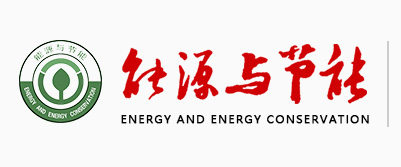202105
厨余垃圾沼渣特性及资源化利用
姜蒙
(上海市机电设计研究院有限公司,上海 200030)
摘要: 研究分批选取上海和宁波2 个处理厂经干式厌氧发酵工艺产生的厨余垃圾沼渣,对其进行基本理化性质、营
养指标、发芽指数和重金属含量检测。结果显示:厨余垃圾干式厌氧发酵沼渣的pH 值范围为7.23~8.14,均呈碱性,差
异不大;可溶性盐含量范围分别为1.78~1.85 mS/cm 和2.62~2.91 mS/cm;NaCl 含量很低,且两厂差异明显;有机质的范
围为20%~30%,较其他类型沼渣含量低;总养分在5%以上;发芽指数范围为6.58%~14.74%;所测重金属质量分数均较
低,As 为低于检出限~2.63 mg/kg,Cd 为低于检出限~0.81 mg/kg,Pb 为9.47~19.34 mg/kg,Cr 为4.20~12.77 mg/kg,Hg
和Tl 均未检出。这表明,厨余垃圾沼渣具有丰富的营养成分以及低生物毒性,资源化利用潜力好。但是,相对较低的
EC 值和有机质含量影响了厨余垃圾沼渣的直接利用;极低的腐殖质含量和发芽指数说明,厨余垃圾经干式厌氧发酵工艺
处理后,产生的沼渣仍具有较高的植物毒性。鉴于此,可做进一步处理,提高腐熟程度后作为绿化用有机基质施用或者
作为原料生产价值更高的有机- 无机复混肥。
关键词: 厨余垃圾;沼渣;资源化
中图分类号: X799.3 文献标识码: A 文章编号: 2095-0802-(2021)05-0074-04
Characteristics and Resource Utilization of Food Waste Biogas Residues
JIANG Meng
(Shanghai Institute of Mechanical & Electrical Engineering Co., Ltd., Shanghai 200030, China)
Abstract: The research selected batches of food waste biogas residues produced by dry anaerobic fermentation in Shanghai and
Ningbo, and conducted necessary physical and chemical testing, nutrition index testing, germination index testing and heavy metal
testing. The results showed that the pH range of the food waste biogas residues was 7.23-8.14, all of them were alkaline with
unobvious difference; the EC range was 1.78-1.85 mS/cm and 2.62-2.91 mS/cm separately; the content of NaCl was very low, and
the difference between the two plants was distinct; the range of organic matter was 20%-30% and lower than other types of biogas
residue; the entire nutrient was above 5%; the germination index ranged 6.58%-14.74%. Besides that, the heavy metal As ranged
ND to 2.63 mg/kg, the Cd ranged ND to 0.81 mg/kg, the Pb ranged 9.47-19.34 mg/kg, the Cr ranged 4.20-12.77 mg/kg, Hg and
Tl were not detected. All the above indicates that food waste biogas residues has high nutritional components and low biological
toxicity. It has good potential of resource utilization. However, the relative lower EC and organic matter content affect the direct
utilization of food waste biogas residue. At the same time, the extremely low humus content and germination index show that the
food waste biogas residue treated by dry anaerobic fermentation process still had high phytotoxicity. Therefore, it is necessary to
further improve the maturity to use it as organic substrate for greening or produce high-value organic-inorganic compound fertilizer
as raw material.
Key words: food waste; biogas residue; resource


